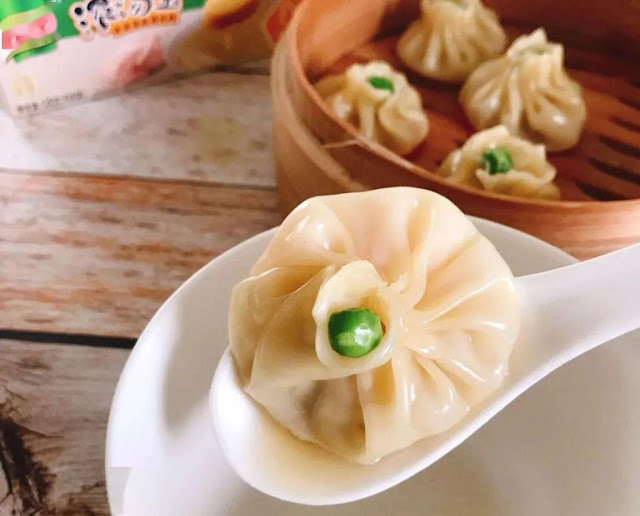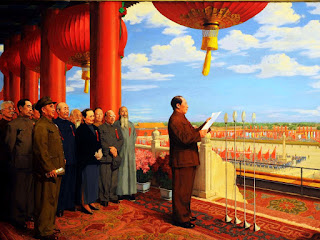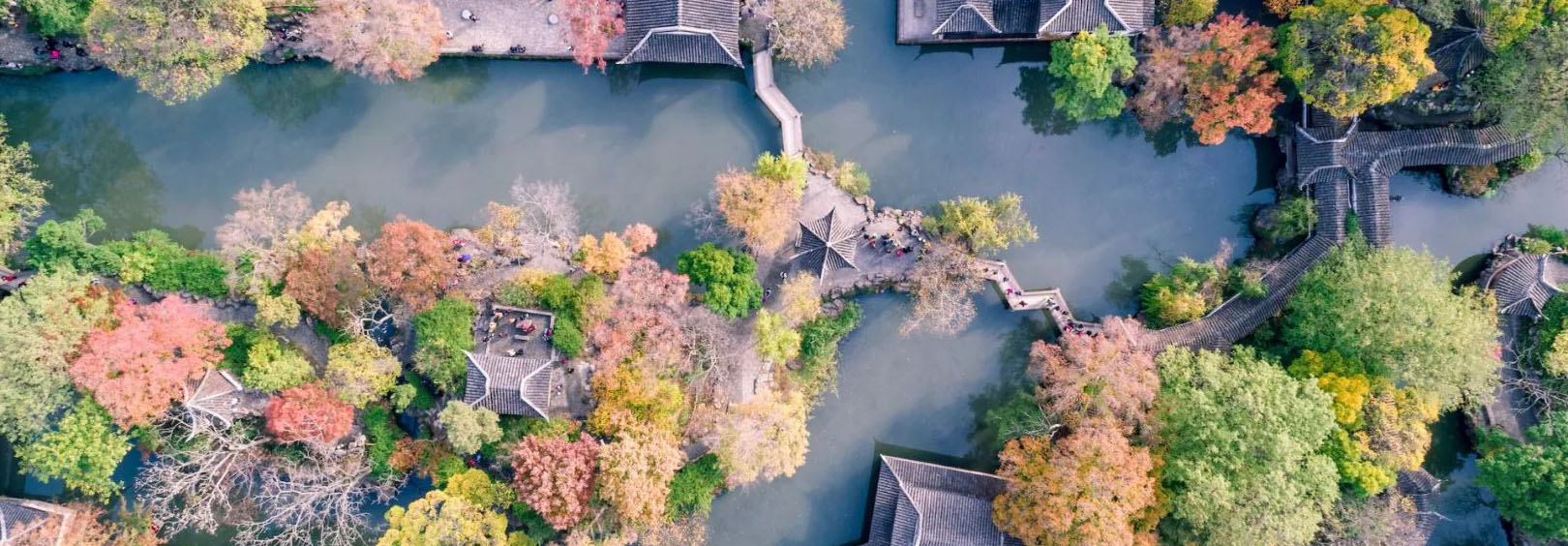Chinese Dumpling Culture: Top 13 Most Popular Dumplings in China
There is a Chinese saying that no food is better than jiaozi (dumpling). However, the dumpling is only a generic term for any wrapped food in a doughy exterior. There is a variety of dumplings in China. English speakers often feel confused that they all seem similar. Today, you are about to dive into the world of Chinese dumplings and get to know the top 13 most popular of them.
- 1.Jiaozi (Dumpling)
Jiaozi is a kind of food shaped like a crescent or ingot, consisting of a rolled piece of dough and fillings made of vegetables or meat. It’s very common in China and East Asia. It’s a food of festivals and holidays, especially for the Lunar Chinese New Year and the Winter Solstice Day. Today, with the improvement of quality of life in China, dumpling becomes a daily delicacy. People also invented multiple ways to cook it, like boiling, frying, and steaming, and in terms of folding techniques, there are many innovations as well, but the most popular kind is the pinched-edge fold.
Where to eat?
Jiaozi can be found literally in most Chinese restaurants. However, if you are looking for a dumpling banquet where you can get to know and taste all kinds of dumplings, Xian Dumpling Banquet is the right choice.
 |
| Dumpling |
- 2.Tangbao (Soup Dumpling)
Tangbao, also named as Soup Dumpling, is basically soup-based dumplings. You may wonder how anyone could wrap something like soup without leaking. The soup is not soup, but a kind of gelatinous filling frozen in advance before being wrapped. When these dumplings get steamed, the frozen fillings (often made with chopped pork or crab meat) are turned into thick soup.
Therefore, when you have the Tangbao, you must be careful. Please make sure you pick it up at the top with your chopsticks and then take a small bit from the side, allowing the soup to come out into the spoon held below. When the soup is shortly cooled, you can taste it.
Where to eat?
Today, you can find Tangbao in almost every city of China, but Shanghai has one of the most popular soup dumplings.
 |
| Soup Dumpling |
- 3.Har Gow (Shrimp Dumpling)
Har Gow is the Cantonese way of saying the Xiajiao (shrimp dumpling). It’s characterized by a translucent wrapper, and chewy filling mainly contains shrimp and bamboo shoots. Unlike other wrappers, the wrapper of har gow is made of wheat starch and corn starch, and the wrapper should be half thin and half thick. In this way, the fillings will stay where they are without leaking out when steamed. The traditional har gow is shaped like a crescent with 9-13 pleats. Today, making har gow is a test every Cantonese chef must grasp.
Where to eat?
Har gow was invented by a Cantonese; therefore, the best har gow is in Guangzhou. Make sure you taste it the next time you visit Guangzhou.
 |
| Shrimp Dumplings |
- 4.Guotie (Pot Sticker)
Guotie is a traditional snack that originated in Kaifeng (the capital city of the Northern Song dynasty). It’s somewhat similar to dumplings, except that it’s not fully wrapped but with both ends opened. The fillings are the same as that of ordinary dumplings. When it’s pan-fried, Guotie has a golden bottom and chewy top, making it extremely delicious. It’s often served as a side dish or appetizer.
Where to eat?
As the birthplace of Guotie, Kaifeng is where you can have the authentic Guotie.
 |
| Guotie |
- 5.Xiaolongbao
Xiaolongbao is a derivative of Tangbao, but smaller and with less soup. In the Northern Song Dynasty, the Tangbao was invented, and when the Song court fled to Jiangnan (south of Yangtze River), the culinary culture was brought to south China as well. Xiaolongbao also became one of the representative food in Jiangsu and Zhejiang areas. Today, there are many forms of Xiaolongbao all over China. Among them, Shanghai Nanxiang Xiaolongbao, Wuxi and Changzhou Crab Xiaolongbao, Taiwan Ding Tai Feng Xiaolongbao, and Kaifeng Guantang Xiaolongbao are the most popular ones.
Where to eat?
You can taste Xiaolongbao in almost every city in China, but the best ones are Shanghai, Kaifeng, and Taiwan.
 |
| Xiaolongbao |
- 6.Chun Juan (Spring Roll)
Chunjuan is a traditional food for the holidays. In south China, most people skip dumplings to eat spring rolls and Tangyuan. Like Guotie, Chunjuan is also in rectangle shape, but it’s closely wrapped and deep-fried. Therefore, the spring roll is bigger and crisper.
Where to eat?
Spring roll is quite common in China, but the best Chunjuan comes from Hong Kong.
 |
| Spring Roll |
- 7.Baozi (Buns)
Baozi is the bigger version of Xiaolongbao. It’s one of the most popular breakfast choices in China. You can find it in many grab-and-go eateries and convenience store counters. The most famous Baozi is Tianjin Goubuli Baozi, founded by Gao Guiyou (whose infant name was Gouzi) in mid 19th century. It’s said that the Baozi made by him was extremely popular that there were always lines before his store. He was too busy to respond to many customers that people started to call his Baozi the Goubuli (meaning that Gouzi took no notice to people) Baozi. Today, there are still many Goubuli Baozi Stores in Tianjin.
Where to eat?
Make sure you taste the world-famous Goubuli Baozi in Tianjin.
 |
| Baozi |
- 8.Shaomai
Shaomai literally means cook and sell. It’s a dim sum like an open-topped dumpling filled with glutinous rice or chopped pork. There is no unanimous saying about where exactly it originated, but Shaomai is becoming popular not just in China, but in Japan, South Korea, Vietnam, and other southeast Asian countries.
Where to eat?
Shaomai, in different places in China, is different. If you like rice, southern Shaomai may be right for you. You may consider Guangzhou. If you prefer meat fillings, northern Shaomai might be your favorite. Just order some in a Beijing restaurant.
 |
| Shaomai |
- 9.Wonton
Wonton is a traditional Chinese food with a thin wrapper filled with minced pork. It’s often boiled and served in soup. You can see the fillings without tasting it. Some people may find wonton and dumpling a little confusing. Wonton has a much thinner wrapper and fewer fillings. It’s translucent when boiled. Besides, eating wonton is all about soup. If the soup is not perfect, the wonton is ruined. Dumpling has a relatively thick wrapper and more fillings. Having dumpling is more about the sauce. Lastly, the wonton’s wrapper is square-shaped and bigger. The dumpling’s wrapper is circular and small.
Where to eat?
Wonton has different names in different places; for example, it’s called Chaoshou in Chongqing and Chengdu, Yuntun in Guangzhou, and Bianrou in Fujian. When you visit Chengdu the next time, don’t miss the Chaoshou.
 |
| Wonton |
- 10.Tangyuan
Tangyuan, the same as the dumpling, is a holiday food, especially for the Lantern Festival. It’s round and graceful, like a small white ball filled with sesame and sugar. The reason why Chinese eat Tangyuan is that it represents reunion, and it tastes sweet and soft. There are mainly two kinds of Tangyuans: Yuanxiao in north China and Tangyuan in south China. The fillings are similar; what makes them different is the way of making it. Yuanxiao is rolled in a big circular sifter. Tangyuan is wrapped like a round dumpling.
Where to eat?
The birthplace of Tangyuan is Ningbo. Therefore, you can find the best Tangyuan there.
 |
| Tangyuan |
- 11.Mantou (Steamed Buns)
Mantou, also called Mo or Zhengmo, is one of the staples in north China. It can be called steamed Baozi without filling. Legend has it that Zhuge Liang invented Mantou in the Three Kingdoms Period. He created Mantou to replace the human heads he was supposed to offer as a sacrifice to the river. Mantou in north China is mostly plain and consumed together with other dishes. Steamed buns in south China can be sweet or filled with meat or vegetables.
Where to eat?
Chinese restaurants don’t serve Mantou alone; you have to order some dishes with it. The best steamed Buns lie in north China, especially Shaanxi. So, make Mantou-tasting your must-do thing on your next visit to Xian.
 |
| Mantou |
- 12.Huajuan
Huajuan is a close cousin to the steamed bun. It’s tastier due to the spices like salt, sesame paste, or scallion oil added. The process of making Huajuan is the same as that of steamed bun. Make a flour dough first and then add yeast to ferment until the dough swells to twice its original size. Knead the dough several times before shaping the Huajuan. Then, shape the dough into a “flower” shape and sprinkle spices or the minced green onions. Lastly, steam the Huajuan.
Where to eat?
Huajuan is, like the steamed bun, a staple in northern Chinese families. You can’t order it alone in restaurants. Many restaurants don’t serve Huajuan; the best place to taste it is to buy some in stores that only sell steamed buns in northern Chinese cities like Xian.
 |
| Huajuan |
- 13.Zongzi (Rice Dumplings)
Zongzi, a festive food dedicated to Dragon-boat Festival, is made of glutinous rice and reed leaves. North Chinese prefer sweet Zongzi that is made of glutinous rice and Chinese date or sweetened bean paste. South Chinese prefer salty Zongzi that is made of glutinous rice and pork. In recent years, many more odd fillings like crab, egg, fruit emerged. Zongzi isn’t just popular in China. It prevailed in Korea, Japan, and other Southeast Asian countries.
Where to eat?
There is no specific place you can have the best Zongzi. You need to visit China around the Dragon-boat Festival; you will taste Zongzi.
 |
| Zongzi |
China has such a rich culture regarding dumplings. It’s not something we can cover over a piece of article. If you are interested in Chinese food, especially the dumplings, visit China and have some on your own. You will be surprised by how little you know about the dumpling culture.
Join us at the



Comments
Post a Comment